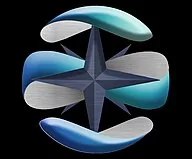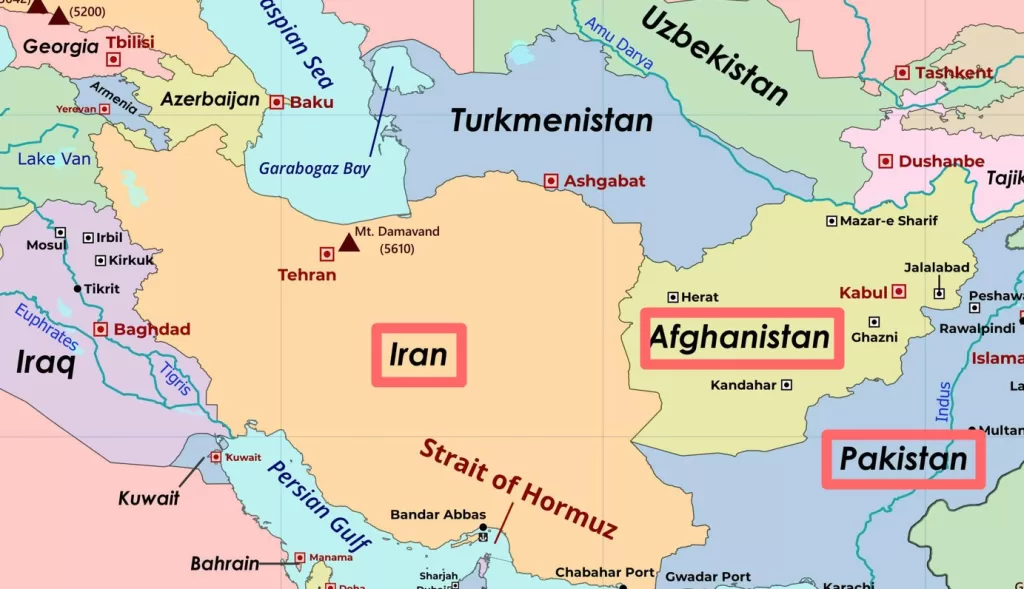Iran and Israel are engaged in an undeclared war in the last two decades. It is mainly a proxy war revolving around Iran’s attempts to acquire nuclear capability and Israel’s attempts to thwart these efforts. Since Iran is unable to match the military, diplomatic and economic strength of Israel it has used the strategy of using of proxies rather than direct conflict.
The 07 October 2023 Hamas attack on Israeli towns near the border changed the landscape of the region. Iran is a supporter of Hamas, but the extent of role Iran played in October attacks is not clear. A closer look at the events of the last four years and Iranian strategy to respond indirectly strongly suggests that Tehran had a significant role in advising Hamas on the unprecedented attack. In my view, the target killing of Al Quds Commander Qasim Soleimani in January 2020 and assassination in December 2020 of Iran’s Oppenheimer Mohsin Fakhrizadeh were the turning points where the Iranian leadership decided to up the ante and entangle Israel in a new cycle of conflict with Hamas and Hezbollah.
The Iranian decision-making process is opaque, but one thing is clear, that Supreme Leader Ali Khamanei controls all levers of power. The unelected power centers are dominant over elected power centers. Parliament members and the President are directly elected but the President does not control the armed forces. The Supreme Leader appoints heads of the armed forces including Islamic Revolutionary Guards Corps (IRGC), heads of police and national broadcasting and head of the judiciary who in turns appoints chief justice and prosecutor general.
The twelve-member Guardian Council has legislative, constitutional, and electoral supervisory roles. It can veto the legislation passed by the parliament, acts as a constitutional body as it interprets if a law is in line with the constitution and vets all candidates for election of parliament and assembly of experts. Six of the twelve members are directly appointed by the supreme leader while the remainder six are appointed by the head of the judiciary who in turn is appointed by the supreme leader. The forty-four-member expediency council whose members are nominated by the supreme leader mediates if there is any conflict between parliament and guardian council. The eighty eight-member council of experts selects supreme leader from among its members, but the election of its members is managed by the guardian council. The Supreme leader is visible in every layer of important decision-making process and one example shows this influence. The former two term president and member of the council of experts for twenty-four years Hassan Rouhani’s papers for re-election were rejected by the council of guardians. A person who was fit to be member for over two decades and served as president of the country for two terms was now found to be ineligible to be the member of the council of experts as he was viewed as a potential contender for the supreme leadership role.

MONOGRAM of IRGC
Al Quds Force of IRGC is responsible for managing overseas operations including managing proxies for attacking Israeli interests. It trains, provides funds and intelligence to its proxies. Iranian strategy is called the ‘ring of fire’ around Israel to keep it busy in its neighborhood so that it cannot concentrate its efforts against Tehran. Hezbollah in Lebanon periodically unleashes rockets in northern Israel while in the south, Hamas keeps the Israeli military and intelligence apparatus busy. Iran’s direct involvement in the Syrian civil war provided Tehran unprecedented leverage in Syria and attempted to destabilize Israeli border with Syria with the help of Hezbollah.
Israel had to up its own retaliatory game in Syria targeting Iranians working in the country to prevent entrenchment of Iranian assets near the Israeli border. The Yemeni civil war provided Tehran to get a foothold in the Arabian Peninsula by supporting Shia Houthis, this paid dividends during the current Israeli-Hamas war when Houthis attacked shipping in the Red Sea.
In an unprecedented attack, a Houthi drone hit an apartment building in Tel Aviv killing one Israeli. Israel had to double the number of radar operators to have two sets of eyes on targets to prevent such incidents and now forty percent of the Israeli air force is fully engaged in only air defense role. Following the script of ‘escalation dominance’, Israel had to mobilize dozens of aircrafts including intelligence reconnaissance, air to air refueling and rescue aircrafts and F15s and F35s to bomb oil storage facilities at Hodeida port that has already been made essentially dysfunctional by previous the Saudi air campaign. Even a cursory look at the landscape shows how Israeli energies are being sapped in an ever-expanding conflict with several Iranian proxies with no direct cost to Tehran.

Map of Israel and neighboring countries
Israel’s response to Iran is called the ‘campaign between the wars’. Israel’s response is multi-faceted and includes target killing of Iranian nuclear brain trust and military and intelligence officials, covert operations inside Iran and cyber-attacks. All anti-Iran operations are coordinated by an entity called ‘The Third Circle’. The Israeli strategic community divides the country’s security challenges into three circles. First circle is the immediate threats from Hezbollah in Lebanon, Hamas in Gaza Strip and emerging threats from West Bank, the second circle is countries with direct borders with Israel (Egypt, Jordan, Syria and Lebanon) and the third circle consists of countries that do not share direct borders with Israel. The Third Circle consists of Iran Directorate where research, intelligence, military, and policy decisions are brought under one roof, International Cooperation Directorate that works with friendly Arab countries (Abraham Accords activities were coordinated in this Directorate) and a Strategy Directorate where all activities are coordinated.

Monogram of The Third Circle
Israel has close relations with Kurds of the Kurdistan Regional Government (KRG) in northern Iraq that is a de facto independent country. Israel has close intelligence, security, and economic cooperation with KRG. A number of Iranian Kurdish dissidents are also based in northern Iraq and many operations against Iran were coordinated with Kurds. The most important staging ground against targets inside Iran, especially target killing of nuclear scientists are carried from Azerbaijan, the only other Shia majority country. Israel has close economic, intelligence and military coordination with Azerbaijan, and it allowed Israel to operate against Iran in return for military supplies and crucial intelligence in its conflict with Armenia. At one time, Baluch dissidents were also used against Iran but with the departure of Americans from Afghanistan in 2022, that area is not active.

MAP of IRAN
Iran and Israel are at a crucial crossroad where strategic decisions made by both countries will determine the roadmap ahead. If Israel concludes that reactive kinetic operations against Iranian proxies is a never-ending enterprise and the only solution of the problem is toppling of the ayatollahs in Tehran, then the whole chessboard of the region will be re-arranged. Presently, it looks as if Israel’s strategic community is reaching towards this conclusion.
On the other hand, from Tehran’s point of view toppling the regime is an existential threat. Its importance is gauged from the fact that article 176 of the Constitution states ‘preservation of revolution’ (read ayatollah rule) comes first ahead of preservation of territorial integrity and national sovereignty of the country.
Faced with this existential dilemma, Tehran will try to use Israel’s distraction in Gaza to leapfrog the distance to shorten the ‘nuclear break out’ window (most recent Israeli and American intelligence suggests that Iranians have increased the stockpile of highly enriched uranium and conducting computer models normally used for nuclear weapons testing). In extreme case, Iran will facilitate collapse of Palestinian Authority in West Bank and attempt to overthrow the Jordanian monarchy where a quarter of the country’s population is of Palestinian heritage.
Tehran has been ‘shaping the space’ by supporting Palestinian Islamic Jihad (PIJ) in West Bank and facilitating weapons smuggling to Jordan through Syrian and Iraqi borders. Israel is trying to dismantle PIJ cells in West Bank and in the recent conflict while all attention is on Gaza more than five hundred Palestinians have been killed in West Bank. Jordanian forces have thwarted several attempts of weapons smuggling to the kingdom.
The collapse of Palestinian Authority and Jordanian monarchy will put Israeli security into unchartered territory the likes of which Israel has not seen in the last fifty years. Israel’s border with Gaza is about thirty-seven miles and with Lebanon seventy-nine miles and the crisis along these two borders is sucking all the oxygen from Israeli political, diplomatic, military and intelligence apparatus and putting severe strain on the economy.
In comparison Israel’s border with Jordan is one hundred miles long and establishment of hostile proxies in Jordan will threaten all major population centers of Israel forcing Israel to invest heavily to protect this long border.
Despite deep mistrust, both sides are also careful and do want ‘uncontrolled escalation’. Recent direct attacks on each other’s territory provides a window to the thinking of decision makers on both sides. This is called ‘choreographed response’ where action of the adversary necessitates the response both to appease domestic audience and to convey a message but to avoid an all-out conflict by communicating through a third party. Israel killed a high-ranking Iranian official by targeting a building next to the Iranian consulate in Damascus. Iran responded by targeting Israeli territory with rockets and drones but it was used in a way that it caused no structural damage or casualties. Israel in turn only targeted air defense system of a military base in Isfahan that houses long range missiles. Iranians communicated with Americans in Oman who in turn were coordinating with Israelis. Both sides were successful in avoiding widening of the conflict but at the same time Iran conveyed that its rockets and drones can reach every corner of the Israeli mainland while Israel communicated that Russian S 300 air defense system provides no protection to Iranian strategic military facilities and if required, Israelis will own Iranian air space.

The Israeli modus operandi has been from ‘mafiosi’ notebook where you offer protection to the greedy and scared ones (Saudi Arabia, UAE) and take a baseball bat to break kneecaps of stubborn ones (Hezbollah, Hamas, Iran). In this ‘head hunting’ game, Israel has lost the strategic foresight. Their conflict has been with Arabs, and they are well versed with the ‘Arab mind’ but now they must pay close attention to the ‘Persian mind’.
On the other hand, Iranian security game is based on their national pastime, chess where you always think two steps ahead. They have absorbed Robert Kennedy’s saying, “Don’t get mad; get even”. They are cleverly using Israel’s two main disadvantages: geography and demography to their own advantage by using a diverse portfolio of proxies.
In Jerusalem and Tehran, fear, hatred, and anger are the engines of all major decisions. Neither side is clear about the ‘real intention’ of the adversary. An out of box thinking is needed and despite deep mistrust at some point Israel and Iran need to make contact.
In the first stage, through a mediator (possibly Oman, although I would prefer a remote place like Turkmenistan to avoid leaks and limelight) and later direct face to face meeting between two countries will be required to break the impasse. The short-term goal should be de-escalation followed by a sustained engagement to address major security issues of both countries.
“He that can’t endure the bad, will not live to see the good” -Jewish proverb
Note
This article is based on a talk given by the author to a private group.





